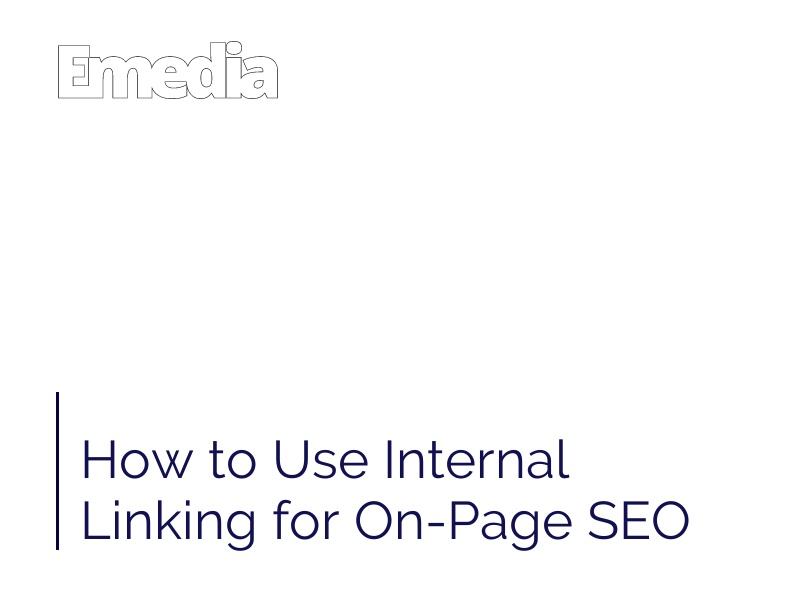Want to boost your website's SEO? Look no further than internal linking. By strategically connecting pages within your site, you can improve your search engine rankings and drive more organic traffic.
In this article, we'll show you how to effectively use internal linking for on-page SEO. You'll learn the best practices for implementing links, how to identify key pages to prioritize, and how to optimize anchor text for maximum impact.
Get ready to take your website to new heights!
The Importance of Internal Linking for On-Page SEO
You should understand the significance of internal linking for on-page SEO. Internal linking is an essential aspect of optimizing your website for search engines and improving user experience. By strategically linking your webpages together, you can enhance website usability and navigation, allowing visitors to easily find relevant information. This not only improves the user experience but also helps search engines understand the structure and hierarchy of your website.
There are several benefits of internal linking for website usability. Firstly, it helps users discover and explore more content on your website, increasing engagement and reducing bounce rates. Secondly, internal links provide context and relevance to your content, making it easier for users to navigate and understand your website.
However, it's crucial to avoid some common mistakes when implementing internal links. One common mistake is using generic anchor text that doesn't accurately describe the linked page's content. Another mistake is overusing or spamming internal links, which can lead to a poor user experience and potential penalties from search engines. By avoiding these mistakes and implementing internal links effectively, you can significantly improve your website's usability and SEO performance.
Best Practices for Implementing Internal Links
When implementing internal links, it is important to consider the relevance and context of the linked pages. By following best practices for internal linking strategies, you can optimize your website for better on-page SEO. One key aspect to focus on is the internal link structure, which refers to the way your website pages are interconnected through links. A well-structured internal linking system can improve user experience, increase page authority, and help search engines understand the hierarchy and importance of your content.
To help you implement internal links effectively, here are some best practices to keep in mind:
| Best Practices | Explanation |
|---|---|
| Use keyword-rich anchor text | Optimize your anchor text with relevant keywords to provide context and improve SEO. |
| Link to relevant and high-quality content | Link to pages that are closely related to the topic at hand and provide valuable information to your audience. |
| Avoid excessive internal linking | Overloading your content with too many internal links can be overwhelming for users and may dilute the SEO value of each link. |
| Monitor and update your internal links regularly | Regularly review your internal links to ensure they are still relevant and functioning properly. |
How to Identify and Prioritize Key Pages for Internal Linking
Identifying and prioritizing key pages for internal linking can greatly improve your website's SEO performance. When it comes to e-commerce websites, internal linking strategies play a crucial role in driving traffic and boosting conversions.
By strategically linking relevant pages within your website, you can guide your visitors to important product pages, category pages, or even promotional offers. This helps potential customers easily navigate through your website, find what they're looking for, and ultimately increase the chances of converting into a sale.
Additionally, internal linking has a positive impact on website conversion rates. By linking related content or products, you provide visitors with more information and options, making it easier for them to make a purchase decision.
Optimizing Anchor Text for Maximum SEO Impact
To achieve maximum SEO impact, using specific and descriptive anchor text is essential for optimizing your internal links. Anchor text optimization techniques involve using relevant keywords that accurately describe the content of the linked page. By incorporating targeted keywords into your anchor text, you can improve the visibility of your website in search engine results.
When creating internal links, it's important to choose anchor text that's both informative and compelling to encourage users to click on the link. Effective strategies for internal link building include using keyword-rich anchor text, linking to relevant and authoritative pages, and ensuring a logical hierarchy of links throughout your website.
Measuring and Analyzing the Success of Your Internal Linking Strategy
To measure and analyze the success of your internal linking strategy, you can use various tools and techniques. One effective method is to track metrics such as the number of clicks on internal links, the time users spend on your website, and the bounce rate. By monitoring these metrics, you can gain insights into how well your internal links are performing and whether they're effectively guiding users through your site.
Additionally, you can analyze the behavior flow of users to identify any patterns or areas where improvements can be made.
Another important aspect to consider when measuring the success of your internal linking strategy is the impact it has on improving user experience. By providing relevant and helpful internal links, you can enhance navigation and ensure that users can easily find the information they're looking for.
